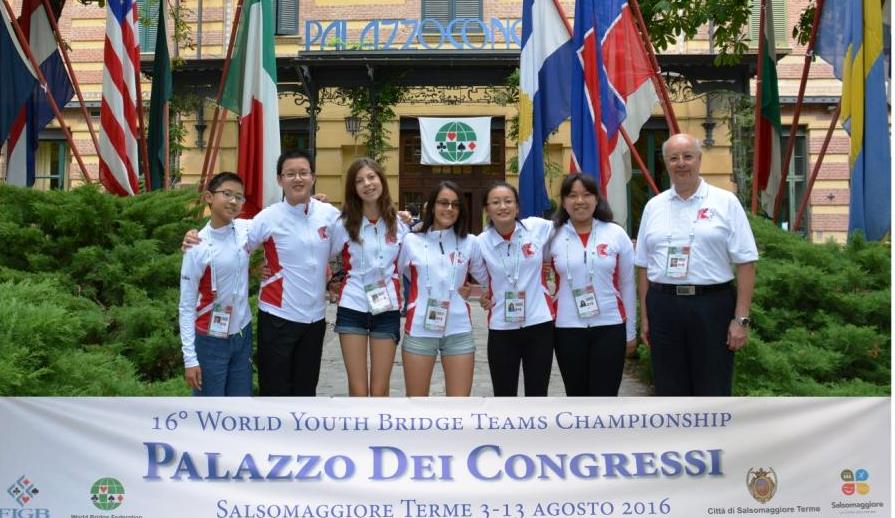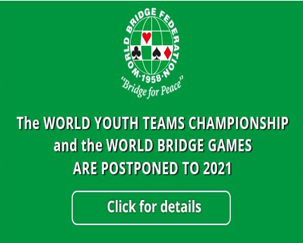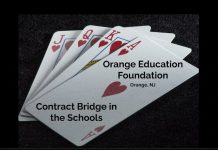Part I: First and second seat openings
The traditional view
When people talk about opening light, they usually are talking about opening in third seat, after partner and right-hand opponent have already passed. There are still many people who adhere to the old Goren rule: “open all hands with 14 or more points, and those with 13 points and a good rebid.” (Traditional Goren adds points for short suits as opener, so his minimum strength was 12-13 HCP for 4432 and 5332 distribution, 11-12 HCP with 5422 or 5431 shape, and 10-11HCP with 5-5 or 6-4 hands.) The modern equivalent of Goren’s guideline is the “rule of twenty:”The rule of twenty: Add your HCP and the number of cards you hold in your two longest suits. If the total is 20 or more, open the bidding; if not, pass.In fact many people play sounder opening bids than the Rule of Twenty recommends. Max Hardy’s Two Over One Game Force says this: “All hands with 13 HCP should be opened. Hands with 12 HCP are opening bids when they have two defensive tricks and no rebid problem. Hands with 11 HCP are opening bids if the high cards are primary and placed in the long suits (it would be criminal to pass with AKxxx-Axxx). . . . the guide to whether or not to open with marginal high card holdings is the shape of the hand and placement of the high cards. Do not open with a bad balanced 12 count in first or second seat, but a distributional 10 count with combinations of primary cards in long suits should be opened.” This is “rule of 20.5 or 21” — only the most exceptional rule-of-20 hands are opening bids. The Roth-Stone system, a predecessor of modern 2/1, was even stricter. Traditional Precision allows openings on 11 HCP and a good 5-card suit, or 13HCP with a flat hand. This is essentially rule of 20 with a few rare exceptions. Some modern systems (rarely seen in North America, and uncommon in most of the rest of the world) take a wildly different approach, opening many or even all hands in the 8-12HCP range in first seat, but using a completely different, usually highly artficial, set of responses. [I need to add some links here to examples] However this article is aimed only at natural 5-card major systems like Standard American and 2/1.
What are the rest of your agreements?
Exactly which hands you should open in first and second seat depends in part on what treatments you use in the rest of your system. Before you read on, ask yourself which of these popular methods do you and your regular partner use:- 1NT Forcing response to 1
 or 1
or 1 opening
opening - 2/1 Game Forcing responses
- Drury (Regular, Reverse, Two-Way, etc.)
- Fourth Suit Forcing
- Delayed Stayman or New Minor Forcing
The Key Question
Any time you’re in a borderline situation and can’t decide whether to open the bidding or not in first or second seat, there is a question you should ask yourself. First, imagine you decide to open; think of what your partner’s most likely responses are, and decide how happy you will be about finding a rebid in that auction. Then, imagine you decide to pass; think of what your partner is most likely to open, and decide how you’d respond to him. Which half of that exercise was easier for you? If you aren’t sure whether to open the bidding or not, ask yourself: Which will be easier — opening and having to find a rebid, or passing and having to find a response to my partner’s opening bid? If you have a hand that’s easy to bid either way, go ahead and open; no reason not to take up some bidding space and make your opponents’ lives a little tougher. If you have a hand that can open and then rebid easily, but can’t think of any response that will do justice to your hand if partner opens, then open yourself and prevent partner from posing an impossible problem to you. If you won’t have a good rebid if you open, but you do know how to describe your hand as responder, pass — don’t create trouble for yourself by opening, let partner make your life easy for you. Hopefully, you wont run across many hands that you can’t describe adequately whether you are opener or responder. If you do, you have just identified a flaw in your current bidding system. No bidding system is perfect; but if you find this happens to you frequently — it’s time to look for ways to improve your methods, not just bemoan your bad luck.Examples
Now let’s look at some typical hands you might be faced with as the dealer, and decide whether or not they should be opened, by asking ourselves that key question. Be warned — some of the answers may surprise you! It’s not as simple as just saying “2/1 players need sounder opening bids than Standard players do.” Think back to the list of conventions I mentioned above:- 1NT Forcing means that a 1
 or 1
or 1 opener always has to find a second bid — passing with a weak hand and 5332 shape isn’t allowed anymore.
opener always has to find a second bid — passing with a weak hand and 5332 shape isn’t allowed anymore. - 2/1 Game Forcing is based on the principle that to make a 2/1 response, you’re certain the partnership’s assets will produce a game. That means the weaker opener is allowed to be, the stronger responder will have to be to bid a 2/1, and the more often responder will have to resort to using 1NT Forcing.
- Drury makes it easier to show an 11-point hand with 3-card trump support after passing, but makes it harder to show a club suit (or a diamond suit, if you play 2-way Drury).
- Fourth Suit Forcing and New Minor Forcing give responder more flexibility and make it easier to handle wider-ranging opening bids. Some people use opener’s 3rd bid in a NMF auction to distinguish between minimum and maximum hands for the 1m-1M-1NT sequence.
Two-suited hands
These are probably the most clear-cut cases of how your shape influences whether to be agressive or conservative in first or second seat. Look at these six hands, and see how much difference it makes which of your suits is longer: JT9xx
JT9xx  KQxx
KQxx  Axx
Axx  x
x xx
xx  Kxxxx
Kxxxx  KQxx
KQxx  Kx
Kx KJxx
KJxx  Qxx
Qxx  x
x  AJxxx
AJxxx KQxx
KQxx  Kxxxx
Kxxxx  Kxx
Kxx  x
x x
x  Axxx
Axxx  KJxxx
KJxxx  Kxx
Kxx Jxx
Jxx  x
x  QJxx
QJxx  AQJxx
AQJxx
- 4 hearts and 5 clubs: Pass. 1
 -1
-1 is a problem.
is a problem. - 5 hearts and 4 clubs: Open; partner is more likely to respond 1
 than 2
than 2 . If you pass and partner opens 1
. If you pass and partner opens 1 it’s bad, if he opens 1
it’s bad, if he opens 1 you might still find hearts via FSF/NMF.
you might still find hearts via FSF/NMF. - 4 spades and 5 diamonds, or 5 spades and 4 diamonds: tossup. (Can you see a reflection in your partner’s eyeglasses to tell you how many hearts he has?)
- 5 spades and 5 diamonds: I tend to pass, since I have the master suit and will probably have a chance to bid it however the auction develops. You’ll find plenty of experts who disagree, and are eager to open these hands to preempt.
- 5 hearts and 5 clubs: I tend to bid, to get the hearts into the auction before the opponents mention the spades, and again, I am more likely to hear 1
 than 2
than 2 from partner.
from partner.
Balanced hands
This section of the article will strike some of you as heretical. But bear with me. Especially if you can open 1- You can adopt Drury. Now you can respond an artificial 2
 when you have a 3-card limit raise for partner’s 3rd-set opening. The down side is that you have traded one problem for another: now it is hands with a club suit that are hard to bid. People use various workarounds: opening the club hands light (but should they rebid 1NT or 2
when you have a 3-card limit raise for partner’s 3rd-set opening. The down side is that you have traded one problem for another: now it is hands with a club suit that are hard to bid. People use various workarounds: opening the club hands light (but should they rebid 1NT or 2 after partner’s 1M response?); using the jump shift to 3
after partner’s 1M response?); using the jump shift to 3 by a passed hand (but do you really want to be that high with your
by a passed hand (but do you really want to be that high with your  Jx
Jx  AQx
AQx  xx
xx  KJxxx after partner opens 1
KJxxx after partner opens 1 ?); or sticking a bunch of semibalanced and unbalanced hands into your 1NT and 2NT responses.
?); or sticking a bunch of semibalanced and unbalanced hands into your 1NT and 2NT responses. - You can agree that 1NT and/or 2m by a passed hand is still absolutely forcing on opener. This is playable, with the same plusses and minuses as 1NT Forcing by an unpassed hand. The down side: it limits your ability to open light in 3rd seat, which we’ll come to in Part II of this series. Especially newer players might like the simplicity of this approach. Almost no experts currently use it, though.
- Yes, you guessed it … open all your weak balanced hands including a 3-card major with 11 or 12 points, instead of waiting for partner to open them! The catch here is that you need to have a mechanism to uncover the 5-3 fit after 1m-1M-1NT. That means playing some form of Delayed Stayman or New Minor Forcing. Ideally a form that allows opener to show both whether he is minimum or maximum for his 1NT bid and whether he has 3-card support for responder’s suit.


























